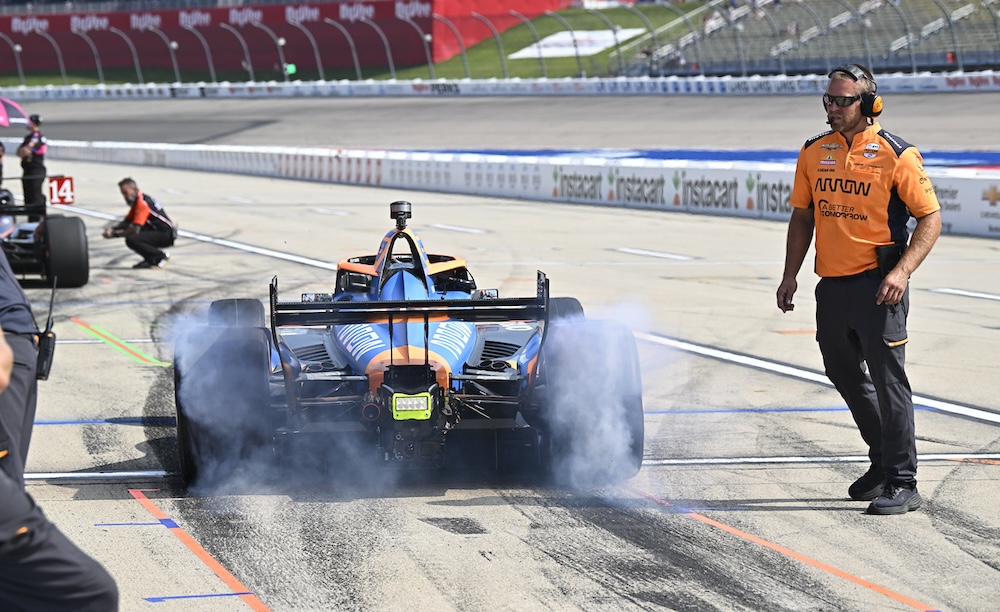The NTT IndyCar Series faced its share of troubles last weekend at Iowa Speedway in its attempts to remotely activate and deactivate the new energy recovery systems (ERS) carried in its field of Dallara DW12s.
With rules in place that disallow drivers from using the ERS units on pit lane to harvest or deploy power — and with another protocol implemented during qualifying for the Hy-Vee doubleheader that proved to be problematic where the units were turned on for most of the 27 drivers to harvest on their final warmup lap, but, due to a software glitch, not for drivers Jack Harvey and Colton Herta — Arrow McLaren team principal Gavin Ward has a suggestion for the series.
“Just leave them on,” he told RACER. “They’ve been causing more issues than they need to by the complexity of when the system can be used or not, and that’s based on them enabling it from the timing and scoring and pit lane beacons.”
[lawrence-auto-related count=3 category=1408]
As IndyCar fans learned during April’s push-to-pass ordeal involving Team Penske, the series enables or disables the push-to-pass system on road and street courses from race control by sending signals through the timing and scoring beacons, which communicates through each car’s MyLaps transponder, and instructs the McLaren engine control unit to turn push-to-pass on or off.
The same system and method has been used during IndyCar’s mid-season move to hybridization where signals are sent through the beacons/MyLaps/ECU pathway to make the 60hp offered by the ERS available or unavailable to drivers based on their location on the track, or the structure of a session like oval qualifying.
From Ward’s viewpoint, IndyCar drivers are more than capable of working within the series’ ERS usage guidelines.
“The disabling or enabling it has caused some issues at recent events, and my opinion is there’s not really any reason why they need to switch it off,” he reiterated. “And if you don’t want to let people start their cars with it in pit lane, then people will just use (external) starters like we already have been. I think they’re worried that drivers are going to be trying to use it on pit lane, looking at the dash, or be distracted by something while they’re driving down pit lane.
“Well, they’ve got to manage hundreds of horsepower from their engine already and do a lot of complex things extremely well, so I think they can trust them to just be sensible to not use it when they aren’t meant to. And if they do, that’s where penalties become available.”
